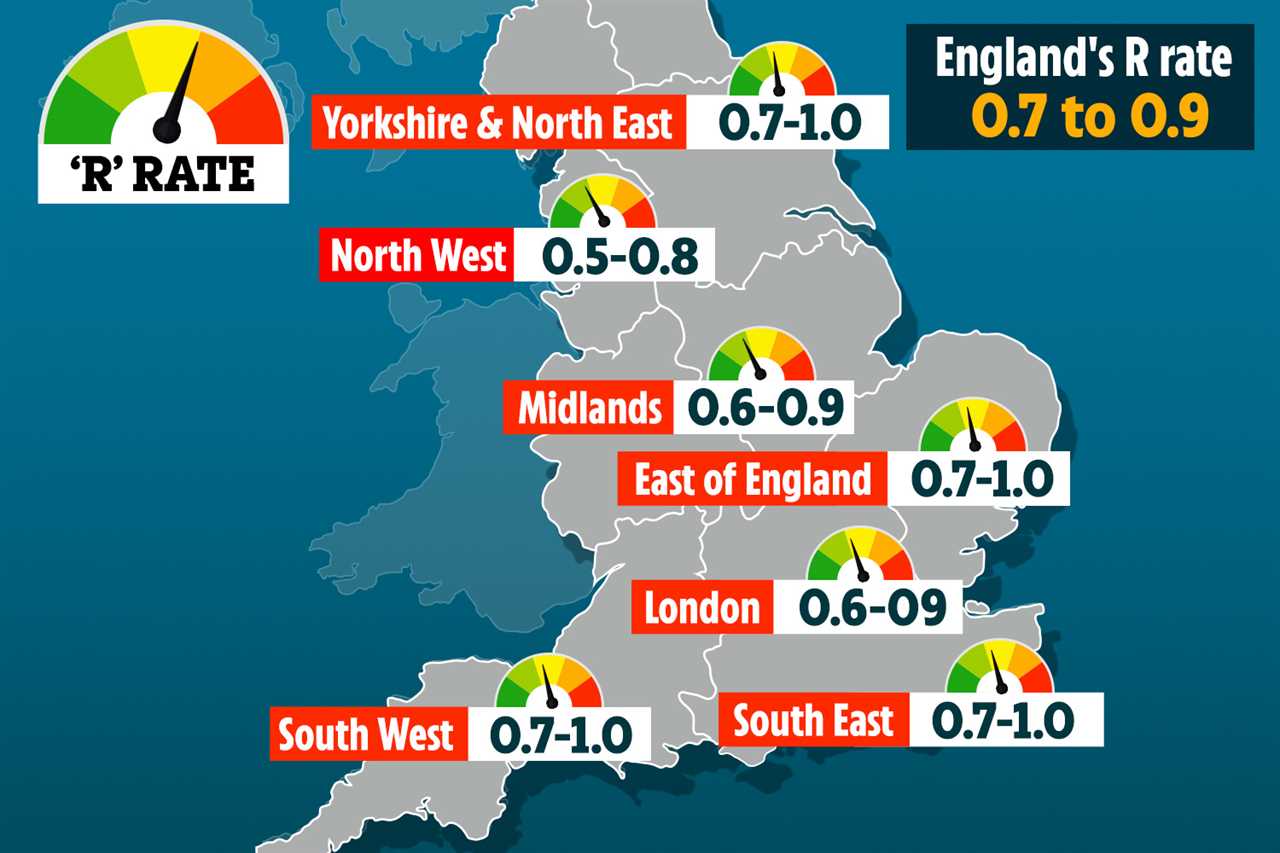THE crucial coronavirus R rate has dropped to its lowest levels since March 2021, new data shows.
Cases of Omicron have been falling in recent weeks and the R rate currently sits between 0.7 and 0.9.

It’s a fall from last week’s rate of 0.8 to 1.1, which had tumbled from 1.1 to 1.5 on January 14.
The last time the R rate was between 0.7 and 0.9 and crucially below one, was on March 26.
An R value between 0.7 and 0.9 means that, on average, every 10 people infected will infect between 7 and 9 other people.
It’s important to note that there is a time delay of up to three weeks with the R rate.
The UK Health Security Agency (UKHSA) said that there is an increased uncertainty in both national and regional estimate of R rate due to a change in testing policy, which they stated makes trends less clear.
The growth rate is also currently between -6 per cent and -2 per cent.
This means that he number of new infections could be shrinking by up to between 6 per cent and 2 per cent every day.
The North West currently has the lowest R rate in the country and sits between 0.5 to 0.8.

Follow our Covid live blog for all the latest updates
It’s followed by London and the Midlands, with both regions sitting between 0.6 to 0.9.
The East of England, the North East and Yorkshire, the South East and the South West all sit between 0.7 and 1.0.
Data published by the Office for National Statistics (ONS) today also shows that just one in 20 people currently have the bug in England.
Cases have fallen in all nations in the UK and on a regional basis, data from the ONS shows that the highest percentage of people testing positive for the virus is in the North East of the country, with the South West being the lowest.
In the week ending January 22, there had been an increase in those aged 2 years to school Year 6 testing positive, with the lowest rates in older adult groups.
Prof James Naismith, Director of the Rosalind Franklin Institute, and Professor of Structural Biology, University of Oxford said the virus is ‘sweeping through’ school children.
He said: “With prevalence in 2 to 12 year-olds above 1 in 10. This is staggering.
“This age group is not being vaccinated routinely.
“Covid is much less severe in this age group than in the elderly but if this this level of prevalence is sustained, then even a small portion of infections leading to long Covid or serious illness will be consequential.
“Children in the 12 to 16 are seeing a rising prevalence, ensuring vaccine take up in this age group is important.
“There are clinically vulnerable children and clinically vulnerable families of children, this degree of prevalence will pose a threat.”
He added that all other age groups are seeing falls in prevalence, which is testament to the effectiveness of the booster campaign.
“There is still more to do in vaccinating all the over 12s and I would urge everyone who can to get vaccinated”, he said.
Most people who are catching the Omicron variant are suffering with cold-like symptoms and the bug seems to be milder for most people.
A string of positive studies show Omicron is milder than other strains, especially in the vaccinated.
Covid booster jabs protect against Omicron and offer the best chance to get through the pandemic, health officials have repeatedly said.
Infections have continued to fall in the last two weeks, dropping 11 per cent since the middle of January.
In general, cases have risen in the last few days and experts have said this could be down to kids going back to school and mixing.






